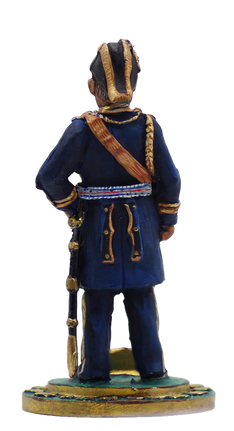
Henry
Prince of Prussia
Prince Henry of Prussia (German: Albert Wilhelm Heinrich; 14 August 1862 – 20 April 1929) was a younger brother of German Emperor Wilhelm II and a Prince of Prussia. Through his mother, he was also a grandson of Queen Victoria. A career naval officer, he held various commands in the Imperial German Navy and eventually rose to the rank of Grand Admiral and Generalinspekteur der Marine. Born in Berlin, Prince Henry was the third child and second son of eight children born to Crown Prince Frederick William (later Emperor Frederick III), and Victoria, Princess Royal (later Empress Victoria and in widowhood Empress Frederick), eldest daughter of the British Queen Victoria. Henry was three years younger than his brother, the future Emperor William II (born 27 January 1859). He was born on the same day as King Frederick William I "Soldier-King" of Prussia. After attending the gymnasium in Kassel, which he left in the middle grades in 1877, the 15-year-old Henry entered the Imperial Navy cadet program. His naval education included a two-year voyage around the world (1878–1880), the naval officer examination (Seeoffizierhauptprüfung) in October 1880, and attending the German naval academy (1884–1886). As an imperial prince, Henry quickly achieved command. In 1887, he commanded a torpedo boat and simultaneously the First Torpedo Boat

Division; in 1888 the Imperial yacht SMY Hohenzollern; from 1889 to 1890 the protected cruiser SMS Irene, the coastal defense ship Beowulf, the ironclad Sachsen and the pre-dreadnought battleship Wörth. From 1897, Prince Henry commanded several naval task forces; these included an improvised squadron that took part with the East Asia Squadron in consolidating and securing the German hold on the region of Kiaochow and the port of Tsingtao in 1898. The prince's success was more of the diplomatic than the military variety; he became the first European potentate ever to be received at the Chinese imperial court. In 1899 he became officially the commander of the East Asia Squadron, later of a capital-ship squadron and in 1903 commander of the Baltic Sea naval station. From 1906 to 1909, Henry was commander of the High Seas Fleet. In 1909, he was promoted to Grand Admiral.

The Imperial German Navy or the Kaiserliche Marine (Imperial Navy) was the navy of the German Empire, which existed between 1871 and 1919. It grew out of the small Prussian Navy (from 1867 the North German Federal Navy), which was mainly for coast defence. Kaiser Wilhelm II greatly expanded the navy. The key leader was Admiral Alfred von Tirpitz, who greatly expanded the size and quality of the navy, while adopting the sea power theories of American strategist Alfred Thayer Mahan. The result was a naval arms race with Britain, as the German navy grew to become one of the greatest maritime forces in the world, second only to the Royal Navy. The German surface navy proved ineffective during the First World War; its only major engagement, the Battle of Jutland, was a draw, but it kept the surface fleet largely in port for the rest of the war. The submarine fleet was greatly expanded and threatened the
British supply system during the U-boat campaign. As part of the Armistice, the Imperial Navy's main ships were ordered to be turned over to the Allies but they were instead scuttled by their own crews. All ships of the Imperial Navy bore the title SMS, for Seiner Majestät Schiff (His Majesty's Ship).

The House of Hohenzollern (German: Haus Hohenzollern) is a royal (and from 1871 to 1918, imperial) German dynasty whose members were variously princes, electors, kings and emperors of Hohenzollern, Brandenburg, Prussia, the German Empire, and Romania. The family came from the area around the town of Hechingen in Swabia during the late 11th century and took their name from Hohenzollern Castle. The first ancestors of the Hohenzollerns were mentioned in 1061. The Hohenzollern family split into two branches, the Catholic Swabian branch and the Protestant Franconian branch, which ruled the Burgraviate of Nuremberg and later became the Brandenburg-Prussian branch. The Swabian branch ruled the principalities of Hohenzollern-Hechingen and Hohenzollern-Sigmaringen until 1849, and also ruled Romania from 1866 to 1947. Members of the Franconian branch became Margrave of Brandenburg in 1415 and Duke of Prussia in 1525. The Margraviate of Brandenburg and the Duchy of Prussia were ruled in personal union after 1618 and
were called Brandenburg-Prussia. From there, the Kingdom of Prussia was created in 1701, eventually leading to the unification of Germany and the creation of the German Empire in 1871, with the Hohenzollerns as hereditary German Emperors and Kings of Prussia. Germany's defeat in World War I in 1918 led to the German Revolution. The Hohenzollerns were overthrown and the Weimar Republic was established, thus bringing an end to the German and Prussian monarchy. Georg Friedrich, Prince of Prussia, is the current head of the formerly royal Prussian line, while Karl Friedrich, Prince of Hohenzollern, is the head of the formerly princely Swabian line.
Awards: Collar and star of the House Order of Hohenzollern (Hausorden von Hohenzollern), Sash, insignia and star of the Order of the Black Eagle (Hoher Orden vom Schwarzen Adler), Stars of the Order of the Red Eagle (Roter Adlerorden) and the Royal Order of the Crown (Königlicher Kronen-Orden).






